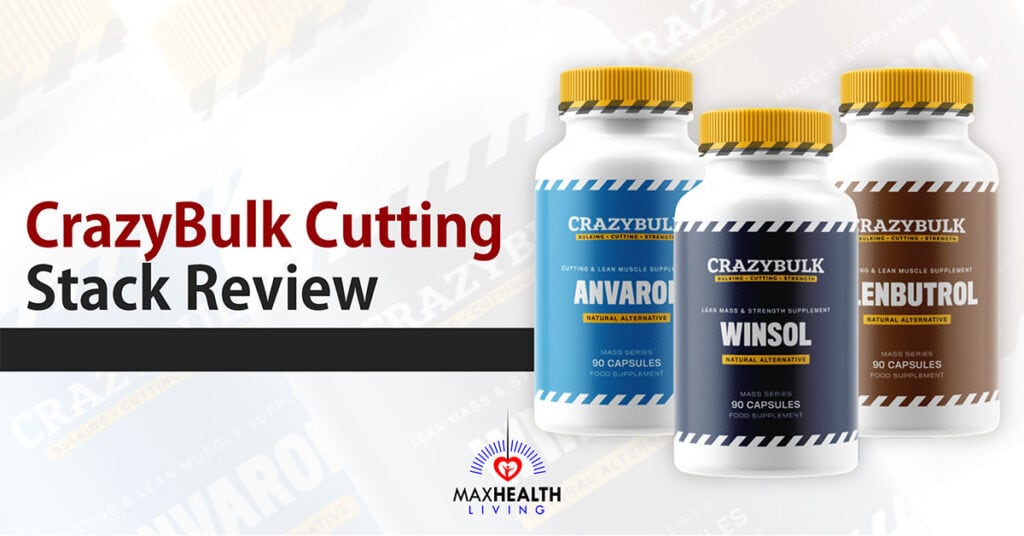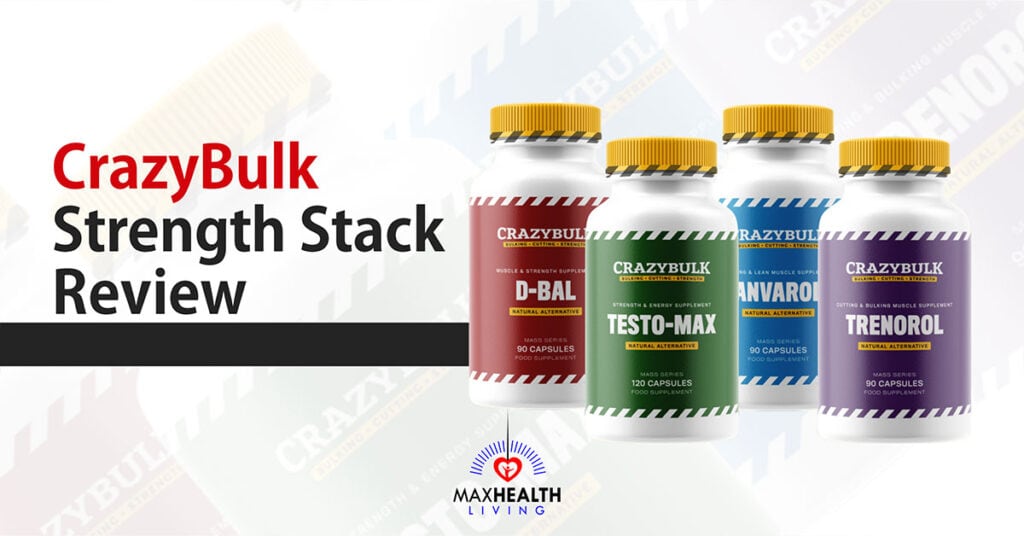Saxenda vs Phentermine: Which is better? (taken together?)
Max Health Living is a reader-supported site. Purchases made through links may earn a commission. Learn more.
Looking to lose weight and feel great? You may be wondering if Saxenda or Phentermine is right for you.
Here, we compare the two weight-loss drugs to help you decide which one is best for you.
You know, no weight-loss drugs are created equal. Although the FDA (Food and Drug Administration) has approved at least five drugs for weight loss, the effectiveness of each one can vary.
Saxenda (liraglutide) and phentermine (e.g., Adipex-P, Suprenza, and Lomaira) are both FDA-approved and available only through prescription.
Costing over $1,000, Saxenda is several times more expensive than phentermine (usually around $10), but is it more effective and worth your money?
Different studies about these drugs have conflicting results. Some show that Saxenda can help lose up to 8% in body weight (in combination with diet and exercise), while phentermine can only help lose around 5%. But a 2016 study showed that 75% of subjects taking a phentermine-containing drug Qsymia lost at least 5% of their body weight, while only 63% of those who took Saxenda (liraglutide) had at least 5% weight loss.
Despite the conflicting results, however, it’s clear that these two have limits of around 5-8% when it comes to shedding weight.
But does that mean phentermine is the better choice because it can deliver similar results at a much cheaper price tag?
Well, not so fast.
Saxenda also remains to be a popular choice among those who want to lose weight, despite its high costs. So, what are its strong points? How are these two different?
Let’s learn more about them below.
Saxenda And Phentermine – What Are They?
Both Saxenda and phentermine are prescription medicines used for adults with weight-related medical problems or obesity (BMI ≥30). Ideally, these drugs can help them lose weight.
They can also act as appetite suppressants, one of the ways for you to lose weight. After all, if you feel full most of the time and don’t like to eat, then you can already begin to lose weight because you’re no longer eating a lot.
Both are also approved by the FDA for use as weight-loss drugs, but they don’t have the same classification.
One is approved for teens 12-17 years old, while the other isn’t recommended for this age group. Find out which one and learn more about their differences below.
What is Saxenda?
Saxenda is a brand of a drug called liraglutide and is actually a higher dose of Victoza, a diabetes medication.
Saxenda was FDA-approved for adults as the first GLP-1 (glucagon-like peptide-1 hormone) analog for long-term weight management in December 2014. Its use has also been approved for adolescents ages 12 to 17 beginning in December 2019.
This drug is an incretin mimetic, which means that it can act like incretin hormones (including GLP-1) and bind to GLP-1 receptors in your body. This stimulates glucose-dependent insulin release.
Because insulin helps move glucose from your blood to your cells for use as energy, Saxenda lowers glucose levels and is considered an antihyperglycemic drug.
But this action also helps suppress your appetite.
What is Phentermine?

Phentermine is a stimulant. Its mode of action is to stimulate your brain to produce more neurotransmitters (norepinephrine, serotonin, and dopamine), which can trick you into thinking you’re already full.
Adrenaline is also a neurotransmitter. Once activated, it gives your body a boost of energy to get ready for the “fight or flight” response.
You can run really fast or feel much stronger with this adrenaline rush. That’s why people who use phentermine also feel energized to work out and push themselves to the limit.
Phentermine was approved by the FDA in 1959, much earlier than Saxenda. Phentermine drug Suprenza (phentermine HCl) was approved in 2011, while Qsymia (phentermine and topiramate extended-release) was approved in 2012.
Saxenda vs. Phentermine Side Effects
Saxenda Side Effects
The most common side effects of using Saxenda can include:
- Change in your blood enzyme (lipase) levels
- Constipation
- Diarrhea
- Dizziness
- Headache
- Injection site reaction
- Low blood sugar (hypoglycemia)
- Nausea
- Stomach pain
- Tiredness (fatigue)
- Vomiting
Children or teens using Saxenda can experience the above side effects, plus fever and gastroenteritis (inflammation or irritation of the intestines).
Saxenda can also cause serious side effects, including any of the following:
- Increased heart rate (racing or pounding in your chest) even while you’re at rest (lasts for several minutes)
- Signs of pancreatitis (inflammation of the pancreas): severe pain in your abdomen that doesn’t go away, with or without vomiting; you might also feel pain from your stomach area to your back
- Signs of gallbladder problems (such as gallstones): pain in your upper abdomen, fever, jaundice (yellowing of your skin or eyes), and/or clay-colored poop
- Signs of a serious allergic reaction: very rapid heartbeat, fainting or feeling dizzy, breathing or swallowing problems, severe rash or itching, and swelling of your face, tongue, lips, or throat
- Signs of low blood sugar: headache, sweating, shakiness, drowsiness, weakness, dizziness, irritability, confusion, hunger, feeling jittery, and fast heartbeat
- Signs of kidney problems or failure: vomiting, nausea, and diarrhea leading to dehydration (loss of fluids)
- Signs of depression or mental health problems: thoughts of suicide and/or sudden changes in your mood, thoughts, feelings, or behaviors
- Signs of possible thyroid tumors, including cancer: hoarseness, trouble swallowing, a lump or swelling in your neck, or shortness of breath
Because Saxenda is a drug that reduces blood sugar levels, it’s important to check your blood sugar before and while taking it to reduce the risk of hypoglycemia or low blood sugar.
If your blood sugar levels fall below 70 mg/dL, you might experience insulin shock, lose consciousness, and fall into a diabetic coma.
Phentermine Side Effects
These are some of the most common side effects of using phentermine:
- Bad taste in your mouth
- Constipation or diarrhea
- Dizziness
- Dry mouth
- Dry eyes
- Erectile dysfunction
- Fatigue, tiredness, and reduced energy levels from overstimulation
- Feeling nervous
- Headache
- Reduced interest in sex
- Restlessness
- Trouble sleeping (insomnia)
Pregnant women should avoid phentermine because it might cause:
- Gestational diabetes
- Preeclampsia (high blood pressure with organ failure)
- Pulmonary hypertension (a fatal lung disorder)
- Increased risk of miscarriage or birth defects
Some emergency signs and serious side effects of phentermine:
- Mood changes
- Signs of low blood sugar: shaking, headache, dizziness, feeling sleepy or weak, a fast heartbeat, sweating, confusion, or hunger
- Signs of an allergic reaction: rash, hives, wheezing, unusual hoarseness, itching and red or swollen skin with or without fever, tightness in your throat or chest, trouble breathing or swallowing, and/or swelling of your face, lips, mouth, tongue, or throat
- Signs of high blood pressure: dizziness, passing out, migraine (a very bad headache), or change in eyesight (blurry)
- Signs of a heart-related emergency: fast or abnormal heartbeat, dizziness, chest pain, fatigue (a weakness that doesn’t go away), trouble breathing, shakiness, or swelling in your arms or legs
Studies show that phentermine can cause or increase your risks of anxiety, depression, and other mood disorders. It might also induce psychosis.
Phentermine vs Saxenda Core Differences
Saxenda and phentermine are FDA-approved weight-loss drugs, but they differ in so many ways:
- Saxenda is administered via injection while phentermine is an oral drug
- The average cost of Saxenda is over $1,000 but phentermine costs just around $10
- Saxenda might be covered by insurance, but phentermine is usually not
- Saxenda can cause low blood sugar, kidney damage, and possibly thyroid cancer
- Phentermine has the potential for abuse, tolerance (the drug is not effective in long-term use), and can worsen heart disease
- Saxenda is FDA-approved for use by teens 12-17 years old, but phentermine is currently still not recommended for this age range
Saxenda and Phentermine Together – Possible Combination?
Because they have different mechanisms of action, Saxenda and phentermine can be used together.
Studies show that although there’s a moderate interaction between Saxenda (liraglutide) and phentermine, they can be safe to use together. In combination, these two drugs can even lead to increased weight loss.
One patient in a 2018 study even lost as high as 25.6% of their initial body weight over a 30-month period of using the drug combination.
Participants in another study, a 2019 clinical trial, also reported higher reductions in hunger and cravings (food preoccupation) than liraglutide alone.
However, it’s possible that you might not experience a huge weight loss with this combination if you already lost at least 12.6% of your weight from other methods (such as using liraglutide). Always remember that different people can react to medications differently, so the combination might also work differently for you.
Which Is Better: Saxenda vs Phentermine?
Each one has its own advantages and disadvantages.
Take a look at this comparison table we prepared to help you make an informed choice:
Saxenda |
Phentermine |
|
| Usage: | Obesity | Obesity (short-term treatment of around 12 weeks) |
| Dosage form: | Injection | Pill (oral) |
| Price: | Around $1,000+ | Around $10+ |
| Pros (upsides): |
|
|
| Cons (downsides): |
|
|
| Common side effects: |
|
|
| Potential side effects in children or teens (12-17 years old): |
|
Not approved for use by this age group |
| Potential side effects in pregnant women: | It doesn’t appear to have extra side effects for pregnant women other than the ones listed above, but it isn’t recommended for them because weight loss during pregnancy offers no potential benefits (unless it’s medically necessary and advised by your doctor) |
|
| Serious side effects: |
|
|
Saxenda isn’t potentially addictive but it costs over $1,000 and can cause kidney damage and possibly thyroid cancer.
Phentermine is relatively cheap at just around $10 but it’s potentially addictive and can worsen heart disease.
Considering these serious risks and side effects of using phentermine and Saxenda, none is better than the other. We don’t think it’s good to choose any of these two, and you might want to consider using an alternative.
We recommend PhenQ.
Continue reading to find out why it’s the better choice.
What’s A Better Phentermine and Saxenda Alternative?
Made using natural ingredients that help you burn fats without stimulants or harmful chemicals, PhenQ is a diet pill that you can take for as long as you need. Plus, the brand claims that it hasn’t received reports of side effects from customers.
While phentermine and Saxenda are prescription drugs, you don’t need a prescription to buy PhenQ.
It’s made of 100% natural ingredients suitable even for vegans and vegetarians:
- a-LACYS RESET (main, active ingredient) – boosts slimming efforts naturally by encouraging your body to burn excess fats
- L-carnitine fumarate – helps shed off excess fats, and prevent mental and physical exhaustion
- Chromium picolinate – appetite suppressant that curbs cravings for sugars and other carbs
- Caffeine – helps burn calories and shed off excess fat stores through heat production
- Capsimax powder – promotes natural thermogenesis and fat-burning
- Nopal cactus fiber – helps with the natural elimination of dietary fats and makes you feel full even with eating less food
You can use PhenQ to lose weight and also help you maintain your weight loss.
It’s alright to stop anytime you want because there aren’t known withdrawal effects, and you can always go back to using it anytime you need another weight loss boost.
Final Thoughts
So, what’s the verdict?
Saxenda is a great option for people struggling with obesity and weight-related health problems, but Phentermine still comes out on top as the best overall weight loss pill. However, if you are looking for a natural alternative to Phentermine, we recommend checking out PhenQ here.
It contains 100% natural ingredients, but without any nasty side effects. Plus, it’s backed by a money-back guarantee, so you can try it risk-free.
Have you tried Saxenda or any other prescription weight loss pills? Let us know in the comments.
Important Disclaimer: The information contained on MAX HEALTH LIVING is intended for informational and educational purposes only. Any statements made on this website have not been evaluated by the FDA and any information or products discussed are not intended to diagnose, cure, treat, or prevent any disease or illness. Please consult a healthcare practitioner before making changes to your diet or taking supplements that may interfere with medications.
Who We Are

We are a team of fitness, health, and supplement experts, and content creators. Over the past 4 years, we have spent over 123,000 hours researching food supplements, meal shakes, weight loss, and healthy living. Our aim is to educate people about their effects, benefits, and how to achieve a maximum healthy lifestyle. Read more.




